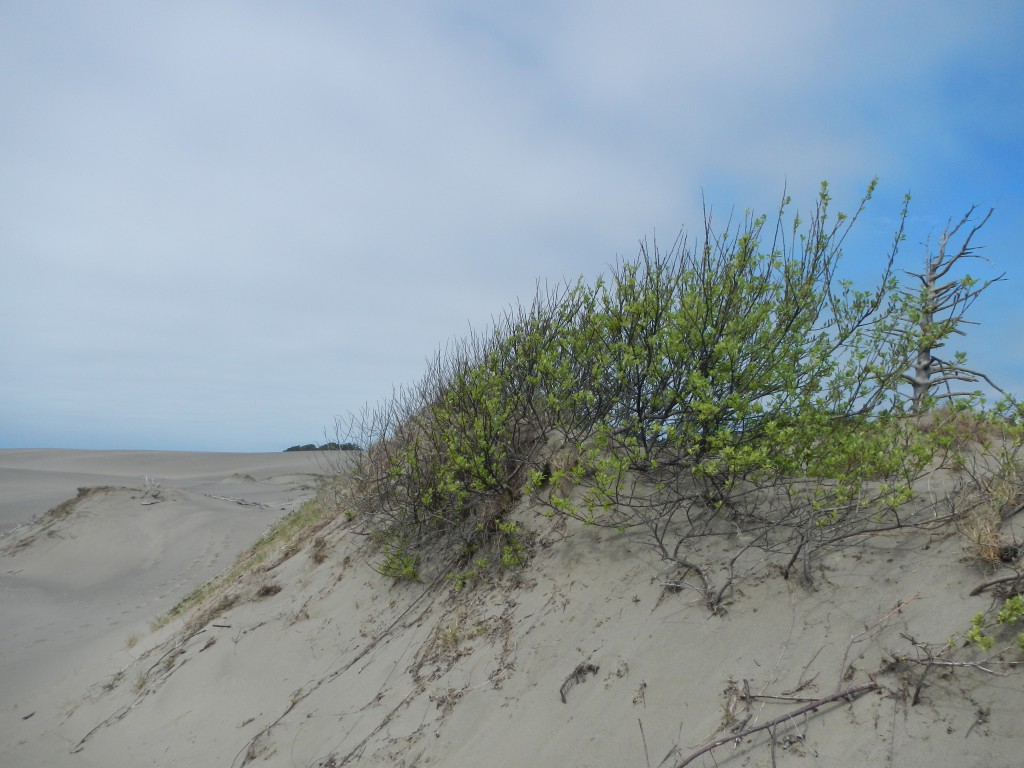Wind is a pervasive abiotic force in coastal dune ecosystems of northern California and can have dramatic effects on plant growth. The willow, Salix hookeriana, is an abundant tree in these coastal dunes and they host a diverse community of arthropods. As a consequence, whether a willow is growing in a wind exposed location may have a dramatic effect on its phenotypic traits (e.g. leaf quality and abundance) as well as the arthropod community that uses it for food and shelter.
In May 2012, I set up an experiment at Lanphere Dunes to examine the effects of wind exposure on S. hookeriana genotypes as well as its associated arthropod community. Thus far, I’ve collected a field season worth of data on willow phenotypic traits (e.g. specific leaf area, water content, growth, etc.) and I’m developing a quantitative food web of herbivore-parasitoid interactions on willows in these experimental populations.
